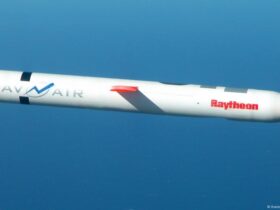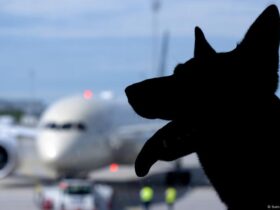Top diplomat Kaja Kallas says the EU has no choice but to step up anti-drone security in the face of continued Russian activity. The foreign policy representative made the comments as he presented a “defense readiness roadmap” outlining preparations for a Russian attack in the near future.
Part of the EU’s plan is the construction of a so-called “drone wall”, as European Commission President Ursula von der Leyen has dubbed it.
Demand for such protection has increased recently as Russia has increased the frequency of its incursions into EU airspace with conventional aircraft as well as, increasingly, unmanned aerial vehicles (UAVs) or drones.
“Drones are already redefining warfare,” Callas said in Brussels. “Drone security is no longer optional for anyone,” he said.
According to Callas, the proposed EU system is to be operational by 2027. Initial plans envisioned a setup on the eastern border of Europe. But recent incursions in the West have changed that calculation.
The new European drone defense initiative is to begin operations in 2026 and be fully functional by the end of 2027.
“Russia does not have the capability to attack the EU today, but it could prepare itself in the coming years,” Kallas said.
“The threat will not end, even if the war in Ukraine ends,” he said.
Reaches the entire European Union and the Eastern Flank
Beyond the European drone defense initiative, Brussels is considering increasing security on its borders with Russia and Belarus.
Eastern Flank Watch is the designation under which the EU will “reinforce the EU’s eastern borders on land, sea and air” and toughen its position on the EU–Russia border by the end of 2028.
“Defending the eastern border is a joint responsibility of all of us,” Lithuanian Defense Minister Dovil Sakalin said on Thursday. Noting that Moscow is “clearly intensifying its hybrid war” against Europe, she said, “I would like to do it as soon as possible, because what we are seeing is a rapidly increasing concentration of incidents.”
Is an EU air and space shield in the works?
In its framework, the EU also put forward the idea of both a European Air Shield and a European Space Shield to defend against missiles and protect space assets.
European leaders, particularly von der Leyen, who said that “recent threats have shown that Europe is in danger,” have seen these initiatives as potential drivers of defense industry progress, significantly increasing the bloc’s defense production capabilities.
The EU has not put a price tag on these projects, nor has it specified where the money to pay for them will come from.
The plans call for more closely integrating both national militaries and defense production to establish a true EU-wide market with harmonized rules that will enable the industry to “deliver in speed and volume”.
Traditionally, the EU plays a minor role when it comes to defence, with individual governments and NATO taking the lead. But this has led to a decline and decline in the bloc’s defense sector and spending, despite the bloc’s collective defense budget doubling to €400 billion ($467 billion) since 2021.
When the leaders of the bloc’s 27 member states meet in Brussels next week, they will take stock not only of whether they can contain Russia, but also how generous their largest economies are willing to be when it comes to defense and putting benefits to the entire continent before national concerns.
The leaders of the EU’s 27 member governments will meet on October 23 to decide whether to support the key proposals.
Edited by: Roshni Majumdar






Leave a Reply